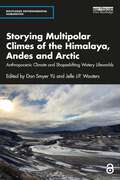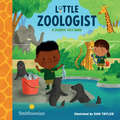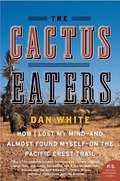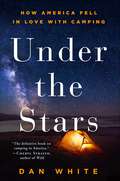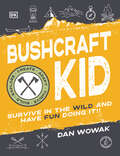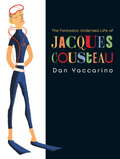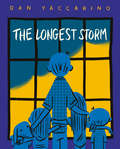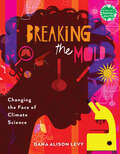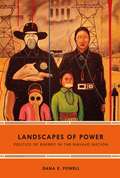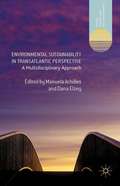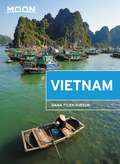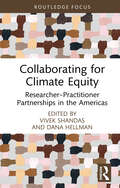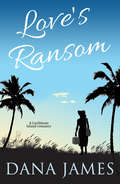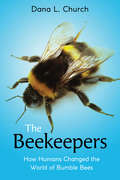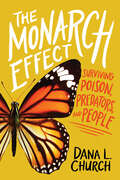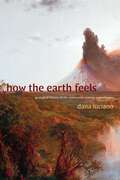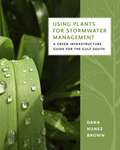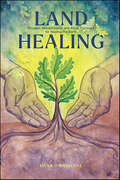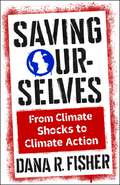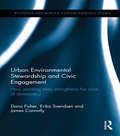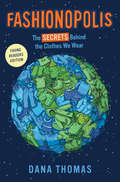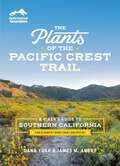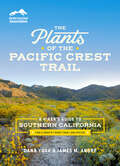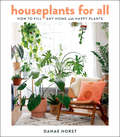- Table View
- List View
Storying Multipolar Climes of the Himalaya, Andes and Arctic: Anthropocenic Climate and Shapeshifting Watery Lifeworlds (Routledge Environmental Humanities)
by Dan Smyer Yü Jelle J.P. WoutersThis book initiates multipolar climate/clime studies of the world’s altitudinal and latitudinal highlands with terrestrial, experiential, and affective approaches. Framed in the environmental humanities, it is an interdisciplinary, comparative study of the mutually-embodied relations of climate, nature, culture, and place in the Himalaya, Andes, and Arctic. Innovation-driven, the book offers multipolar clime case studies through the contributors’ historical findings, ethnographic documentations, and diverse conceptualizations and applications of clime, an overlooked but returning notion of place embodied with climate history, pattern, and changes. The multipolar clime case studies in the book are geared toward deeper, lively explorations and demonstrations of the translatability, interchangeability, and complementarity between the notions of clime and climate. "Multipolar" or "multipolarity" in this book connotes not only the two polar regions and the tectonically shaped highlands of the earth but also diversely debated perspectives of climate studies in the broadest sense. Contributors across the twelve chapters come from diverse fields of social and natural sciences and humanities, and geographically specialize, respectively, in the Himalayan, Andean, and Arctic regions. The first comparative study of climate change in altitudinal and latitudinal highlands, this will be an important read for students, academics, and researchers in environmental humanities, anthropology, climate science, indigenous studies, and ecology. Chapters 8 and 9 of this book are freely available as a downloadable Open Access PDF at http://www.taylorfrancis.com/books/e/10.4324/9781003347026 under a Creative Commons Attribution-Non Commercial-No Derivatives (CC-BY-NC-ND) 4.0 license.
Little Zoologist (A Science Tots Book)
by Dan TaylorTeach your baby all about being a zoologist with this new board book published in partnership with Smithsonian.Scales. Notebooks. Habitats. Microscopes. Zoologists do a lot more than just feed and take care of animals and now young babies and toddlers will be able to learn all about what it means to be a zoologist and what tools they use as part of their job in this exciting and fun book in a new board book series published in conjunction with the Smithsonian Institute.
The Cactus Eaters: How I Lost My Mind -- and Almost Found Myself -- on the Pacific Crest Trail
by Dan WhiteThe Pacific Crest Trail stretches from Mexico to Canada, a distance of 2,650 grueling, sun-scorched, bear-infested miles. When Dan White and his girlfriend announced their intention to hike it, Dan's parents--among others--thought they were nuts. How could two people who'd never even shared an apartment together survive six months in the desert with little more than a two-person tent and some trail mix? But when these addled adventurers, dubbed "the Lois and Clark Expedition" by their benevolent trail-guru, set out for the American wilderness, the hardships of the trail--and one delicious-looking cactus--test the limits of love and sanity.
Under the Stars: How America Fell in Love with Camping
by Dan WhiteWide-ranging in research, enthusiasm, and geography, Dan White's Under the Stars reveals a vast population of nature seekers, a country still in love with its wild places. “The definitive book on camping in America. . . . A passionate, witty, and deeply engaging examination of why humans venture into the wild.”—Cheryl Strayed, author of WildFrom the Sierras to the Adirondacks and the Everglades, Dan White travels the nation to experience firsthand—and sometimes face first—how the American wilderness transformed from the devil’s playground into a source of adventure, relaxation, and renewal.Whether he’s camping nude in cougar country, being attacked by wildlife while “glamping,” or crashing a girls-only adventure for urban teens, Dan White seeks to animate the evolution of outdoor recreation. In the process, he demonstrates how the likes of Emerson, Thoreau, Roosevelt, and Muir—along with visionaries such as Adirondack Murray, Horace Kephart, and Juliette Gordon Low—helped blaze a trail from Transcendentalism to Leave No Trace.
Bushcraft Kid: Survive in the Wild and Have Fun Doing It!
by Dan WowakLearn everything you need to know to survive in the great outdoors! How cool would it be to know how to build a fire, build your own shelter, find your food (and cook it too), and survive almost any environment? Now you can learn all the basic bushcraft skills from expert survivalist Dan Wowak. You&’ll learn how to build the perfect fire, how to build all types of shelters, how to navigate your way through all types of terrain, how to forage for food, how to identify all types of plants and animals, and how to live the bushcraft way of life. And the best thing of all? You&’ll have an absolute blast doing it! Here's what you'll find inside: • Step-by-step instructions for doing everything in the bush, including fire building, shelter building, navigation, and more • The basics of essential food finding using skills like trapping, fishing, and foraging • Cool facts and fun project ideas that will keep you safe and help you become a knowledgeable survival kid • Outdoor tips and tricks that only the best survival experts know • Tasty campfire recipes that will keep you satisfied and energized as you navigate the great outdoors
The Fantastic Undersea Life of Jacques Cousteau
by Dan YaccarinoJacques Cousteau was the world's ambassador of the oceans. His popular TV series brought whales, otters, and dolphins right into people's living rooms. Now, in this exciting picturebook biography, Dan Yaccarino introduces young readers to the man behind the snorkel.From the first moment he got a glimpse of what lived under the ocean's waves, Cousteau was hooked. And so he set sail aboard the Calypso to see the sea. He and his team of scientists invented diving equipment and waterproof cameras. They made films and televisions shows and wrote books so they could share what they learned. The oceans were a vast unexplored world, and Cousteau became our guide. And when he saw that pollution was taking its toll on the seas, Cousteau became our guide in how to protect the oceans as well.
The Longest Storm
by Dan YaccarinoA New York Times 2021 Best Children's BookA Publishers Weekly 2021 Best Book of the YearA 100 Scope Notes / SLJ blog Best Book of 2021A Los Angeles Public Library Best Children&’s BookA Chicago Public Library Best Children&’s Book&“The Longest Storm&” feels like a validation—a blessing, even.&” — Wall Street JournalThis heartwarming family story from acclaimed author-illustrator Dan Yaccarino features a father and his kids who are stuck inside the house together — and figure out how to connect and overcome conflict. A New York Public Library 2021 Best Books for Kids selection.No one knew where the strange storm came from, or why it lasted so long. The family at the center of this timely story has to hunker down together, with no going outside - and that's hard when there's absolutely nothing to do, and everyone's getting on everyone else's nerves. This classic in the making will lift hearts with its optimistic vision of a family figuring out how to love and support one another, even when it seems impossible. ★ Booklist ★ Kirkus ★ Publishers Weekly ★ School Library Journal
Breaking the Mold: Changing the Face of Climate Science (Books for a Better Earth)
by Dana Alison LevySixteen scientists. Protecting our planet. Making science more equitable.Scientists who collect microbes from surfers' skin, who use radar sensors to gather data miles away, who combat inequality by pushing for cleaner air policies. Each with their own story, all working to make life better for future generations.Celebrated author Dana Alison Levy profiles 16 people, all studying different elements of the earth&’s landscape, animals, and climate, who defy stereotypes of who can be a scientist. From analytical chemists to volcanologists, from global experts to recent graduates, these scientists share what they were like as young people, how they got where they are now, and what they—and the rest of us—can do to help the planet.Based on extensive interviews and featuring infographics and personal photos, Breaking the Mold offers a snapshot of the people and organizations fighting to make science more equitable. Back matter includes advice for readers interested in science careers, DIY projects, paths to community involvement, and more.Books for a Better Earth are designed to inspire children to become active, knowledgeable participants in caring for the planet they live on.
Landscapes of Power: Politics of Energy in the Navajo Nation
by Dana E. PowellIn Landscapes of Power Dana E. Powell examines the rise and fall of the controversial Desert Rock Power Plant initiative in New Mexico to trace the political conflicts surrounding Native sovereignty and contemporary energy development on Navajo (Diné) Nation land. Powell's historical and ethnographic account shows how the coal-fired power plant project's defeat provided the basis for redefining the legacies of colonialism, mineral extraction, and environmentalism. Examining the labor of activists, artists, politicians, elders, technicians, and others, Powell emphasizes the generative potential of Navajo resistance to articulate a vision of autonomy in the face of twenty-first-century colonial conditions. Ultimately, Powell situates local Navajo struggles over energy technology and infrastructure within broader sociocultural life, debates over global climate change, and tribal, federal, and global politics of extraction.
Environmental Sustainability in Transatlantic Perspective: A Multidisciplinary Approach
by Manuela Achilles Dana ElzeyExperts from business, academia, governmental agencies and non-profit think tanks to form a transnational and multi-disciplinary perspectives on the combined challenges of environmental sustainability and energy security in the United States and Germany.
Moon Vietnam (Travel Guide)
by Dana Filek-GibsonTrek through lush rainforest, explore lively cities, and fall under the spell of a country on the rise with Moon Vietnam. Inside you'll find: Strategic itineraries ranging from two days each in Hanoi and Ho Chi Minh City to a journey down the Dragon's SpineThe top sights and unique experiences: Cruise the Mekong Delta and its colorful floating markets and visit beaches in resort towns like Nha Trang. Sip local bia hoi beer streetside in Hanoi or motorbike through the countryside. Sample bite-sized dumplings, rice cakes, and other delicacies at a street cart or indulge in fragrant pho. Hike to remote northern H'mong and Dao villages in Sapa, explore the limestone karsts and caves of Ha Long Bay, or take an excursion to Angkor Wat, the largest religious site in the worldHonest advice on when to go, how to get around, and where to stay from journalist and expat Dana Filek-Gibson Background information on health and safety, as well as the landscape, history, wildlife, and culture of VietnamDetailed maps and full-color photos throughoutFull coverage of Hanoi, Ha Long Bay and the Northern Coast, The Central Provinces, The South-Central Coast, Ho Chi Minh City, and the Mekong DeltaWith Moon Vietnam's expert advice and local insight, you can plan your trip your way.Focusing on cities? Check out Moon Hanoi or Moon Ho Chi Minh City. Expanding your trip? Try Moon Phuket & Ko Samui, or Moon Angkor Wat.
Collaborating for Climate Equity: Researcher–Practitioner Partnerships in the Americas (Routledge Focus on Environment and Sustainability)
by Vivek Shandas Dana HellmanThis book explores the capacity of different stakeholders to work together and build urban resilience to climate change through an equity-centered approach to cross-sectoral collaboration. Urban areas, where the majority of the global population dwells, are particularly vulnerable to a myriad of climate stressors, the effects of which are acutely present in places and to communities that have been largely excluded from decision-making processes. Our need for working and learning together is at a critical threshold, yet at present, the process for and understanding of inter-sectoral collaborations remains a theoretical ideal and falls short of the broad appeal that many have claimed. Collaborating for Climate Equity argues that researcher–practitioner partnerships offer a promising pathway toward ensuring equitable outcomes while building climate resilience. By presenting five case studies from the United States, Chile, and Mexico, each chapter explores the contours of developing robust researcher–practitioner collaborations that endure and span institutional boundaries. The case studies included in the book are augmented by a synthesis that reflects upon the key findings and offers generalizable principles for applying similar approaches to other cities across the globe. This work contributes to a nascent knowledge base on the real-world challenges and opportunities associated with researcher–practitioner partnerships. It provides guidance to academics and practitioners involved in collaborative research, planning, and policymaking.
Love's Ransom
by Dana JamesZanthi normally enjoys her diplomatic work as Assistant Secretary at Jumelle's Government House. But strange events on the Caribbean island are troubling her. The unexpected arrival of land surveyor Garran Crossley only adds to the puzzle. Zanthi's hard-won calm is shattered when he announces she will be travelling with him to the jungle interior. Despite his blunt outspoken manner she senses there is much he isn't telling her. Can she trust the deepening attraction between them? Trust him?
The Beekeepers: How Humans Changed The World Of Bumble Bees (Scholastic Focus)
by Dana L. ChurchBumble bees are as familiar to most of us as the flowers these fuzzy insects feed upon. But did you know that the bees in your garden could be escapees from a local greenhouse, or descended from stowaways on a Viking ship?Bumble bees are a vital part of our lives and Earth's ecosystems, so much so that we've commercialized their breeding and shipped them across states, countries, and ecosystems for our benefit. However, all of that human interference has consequences. Bumble bees are pushing out native species and altering ecosystems worldwide. Pesticide use has led to the spread of disease in local colonies. And some species may be disappearing entirely.The Beekeepers is an expertly researched overview of bumble bees -- from hive hierarchies to how their brains work -- and the passionate humans and scientists who are fighting for their survival. With a thoughtful and accessible voice, researcher Dana Church introduces readers to the fascinating world of bumble bees, how and why some are thriving while others are floundering, and how both experts and regular citizens are working to ensure their future. Equal parts endearing, frustrating, and hopeful, this scientific narrative is essential for readers looking to understand and make an impact on our changing world.
The Monarch Effect: Surviving Poison, Predators, and People (Scholastic Focus)
by Dana L. ChurchA not-so-typical look at the mysteries of the monarch butterflyScholastic Focus is the premier home of thoroughly researched, beautifully written, and thoughtfully designed works of narrative nonfiction aimed at middle-grade and young adult readers. These books help readers learn about the world in which they live and develop their critical thinking skills so that they may become dynamic citizens who are able to analyze and understand our past, participate in essential discussions about our present, and work to grow and build our future.With their stunning black-and-orange wings, monarch butterflies are one of the most recognizable insects on the planet. But despite their delicate beauty, these creatures are warriors. The moment they hatch, they're fighting for their lives. Everything is the enemy: from the very leaf they live on to the humans and animals around them to nature itself. How does such a tiny egg survive to become a butterfly? And even after emerging from the cocoon, unimaginable danger awaits: migration.Every year, monarchs take flight, making one of the greatest migrations in the world. However, for a long time, their destination was unknown within the scientific community. Through the research of scientists in Canada and the United States and the support and efforts of ordinary people as well as Indigenous knowledge in Mexico, that mystery was finally solved. But to do so would involve years of searching across three countries and encounters with feuding scientists, the consequences of colonialism, and life-and-death stakes. Weaving together the untold story of survival, scientific discoveries, and the relationship between humans and butterflies, The Monarch Effect explores how one small insect can have an incredible impact on the entire planet.
How the Earth Feels: Geological Fantasy in the Nineteenth-Century United States (ANIMA: Critical Race Studies Otherwise)
by Dana LucianoIn How the Earth Feels Dana Luciano examines the impacts of the new science of geology on nineteenth-century US culture. Drawing on early geological writings, Indigenous and settler accounts of earthquakes, African American antislavery literature, and other works, Luciano reveals how geology catalyzed transformative conversations regarding the intersections between humans and the nonhuman world. She shows that understanding the earth’s history geologically involved confronting the dynamic nature of inorganic matter over vast spans of time, challenging preconceived notions of human agency. Nineteenth-century Americans came to terms with these changes through a fusion of fact and imagination that Luciano calls geological fantasy. Geological fantasy transformed the science into a sensory experience, sponsoring affective and even erotic connections to the matter of the earth. At the same time, it was often used to justify accounts of evolution that posited a modern, civilized, and Anglo-American whiteness as the pinnacle of human development. By tracing geology’s relationship with biopower, Luciano illuminates how imagined connections with the earth shaped American dynamics of power, race, and colonization.
Robin at Hickory Street (Backyard Books)
by Dana Meachen RauWhile searching for a new home where he can begin a family, Robin often hears "no vacancy" and "no trespassing" chirped at him. Pictures are described. Robin at Hickory Street is one of the SMITHSONIAN'S BACKYARD books, a series of books to excite children about animals they might see outside their windows developed by National Museum of Natural History (a Smithsonian Institution Museum). It is a colorful science book for children from preschool through second grade.
Using Plants for Stormwater Management: A Green Infrastructure Guide for the Gulf South
by Dana Nunez BrownThe subtropical climate of the Gulf South supports a varied abundance of flora, and this diversity is sustained by the ample amount of rainwater that characterizes the region. Managing rainwater in a planned environment and mitigating its effect on human habitation can test the skills of even the most seasoned landscape architect or designer. That challenge has never been more acute as increased human demand for natural resources compels professionals and home gardeners alike to seek out sustainable ecological solutions.In this guidebook, Dana Nunez Brown details ways to manage each drop of rainwater where it falls, using a cost-effective and environmentally sensitive approach. Under natural conditions, rainfall primarily percolates into the ground and flows as groundwater until it is absorbed by trees and other vegetation, after which it is evaporated into the atmosphere and the cycle starts anew. Brown identifies plants and techniques that leverage this natural process in order to filter, clean, and slow runoff, a practice known as Low Impact Development. Using Plants for Stormwater Management presents the native ecological communities and plant species of the Gulf South in easy-to-follow sections and diagrams. Information ranging from the productiveness of root structures and the compatibility of plants with local soils to the optimal elevation of specific vegetation and the average dimensions of foliage is represented by graphic icons for quick and easy identification. An accessible and essential resource, this book gives both novices and experts the know-how to harness rainfall and create beautiful, ecologically functioning landscapes.
Land Healing: Physical, Metaphysical, and Ritual Practices for Healing the Earth
by Dana O'DriscollA comprehensive guide to land healing for neopagans and Earth-based spiritual practitioners. This volume is for anyone with a desire to regenerate the natural world and heal the damage caused by humans. With the tools and information presented here, readers will be able to take up the path of the land healer with care, reverence, and respect to all beings. Land Healing covers a range of physical healing topics, such as gardening, permaculture, creating refugia, and wild tending. It also delves deeply into metaphysical healing, with ritual and chant work, energetic healing, palliative care, meditations, psychopomp work, and much more. Additionally, the book covers creating an earth healer&’s crane bag, witnessing and deep listening, and spiritual self-care. The goal of this book is to offer a wide range of physical and metaphysical tools and practices to address the challenges of the present age and bring forth a brighter tomorrow.
Saving Ourselves: From Climate Shocks to Climate Action (Society and the Environment)
by Dana R. FisherWe've known for decades that climate change is an existential crisis. For just as long, we've seen the complete failure of our institutions to rise to the challenge. Governments have struggled to meet even modest goals. Fossil fuel interests maintain a stranglehold on political and economic power. Even though we have seen growing concern from everyday people, civil society has succeeded only in pressuring decision makers to adopt watered-down policies. All the while, the climate crisis worsens. Is there any hope of achieving the systemic change we need?Dana R. Fisher argues that there is a realistic path forward for climate action—but only through mass mobilization that responds to the growing severity and frequency of disastrous events. She assesses the current state of affairs and shows why public policy and private-sector efforts have been ineffective. Spurred by this lack of progress, climate activism has become increasingly confrontational. Fisher examines the radical flank of the climate movement: its emergence and growth, its use of direct action, and how it might evolve as the climate crisis worsens. She considers when and how activism is most successful, identifying the importance of creating community, capitalizing on shocking moments, and cultivating resilience. Clear-eyed yet optimistic, Saving Ourselves offers timely insights on how social movements can take power back from deeply entrenched interests and open windows of opportunity for transformative climate action.
Urban Environmental Stewardship and Civic Engagement: How planting trees strengthens the roots of democracy (Routledge Explorations in Environmental Studies)
by Dana R. Fisher Erika S. Svendsen James ConnollyOnce considered the antithesis of a verdant and vibrant ecosystem, cities are now being hailed as highly efficient and complex social ecological systems. Emerging from the streets of the post-industrial city are well-tended community gardens, rooftop farms and other viable habitats capable of supporting native flora and fauna. At the forefront of this transformation are the citizens living in the cities themselves. As people around the world increasingly relocate to urban areas, this book discusses how they engage in urban stewardship and what civic participation in the environment means for democracy. Drawing on data collected through a two-year study of volunteer stewards who planted trees as part of the MillionTreesNYC initiative in the United States, this book examines how projects like this can make a difference to the social fabric of a city. It analyses quantitative survey data along with qualitative interview data that enables the volunteers to share their personal stories and motivations for participating, revealing the strong link between environmental stewardship and civic engagement. As city governments in developed countries are investing more and more in green infrastructure campaigns to change the urban landscape, this book sheds light on the social importance of these initiatives and shows how individuals’ efforts to reshape their cities serve to strengthen democracy. It draws out lessons that are highly applicable to global cities and policies on sustainability and civic engagement.
Fashionopolis (Young Readers Edition): The Secrets Behind the Clothes We Wear
by Dana ThomasA look at fast fashion and its impact on the environment and social justice, perfect for middle grade classroomsDid you ever think about where your jeans come from? How about the people who made your T-shirt, or what happens to the clothes you grow out of when you're done wearing them? The fabrics clothes are made of, the way they are designed and sewn and shipped around the world, and the way we consume them and get rid of them--every step in this process has a big impact on our environment, on the people who work in clothing factories, and on our cultures. This nonfiction book shows us how the clothes we wear--and throw away--every day are made, and what that means for our planet and for people around the world.
The Plants of the Pacific Crest Trail: A Hiker's Guide to Northern California
by Dana York James M. AndréDiscover and appreciate the flowers, trees, and other plants on the Pacific Crest Trail with this beautiful guide to the American West's natural wonders. Quickly find, identify, and learn about the amazing range of plants growing along the Northern California stretch of the Pacific Crest Trail. It&’s easy with The Plants of the Pacific Crest Trail, organized by type, color, and trail section. You may encounter carnivorous sundews or lilies with petals like butterfly wings. With hundreds of color photos and lively, accessible descriptions, there&’s so much you can learn. Whether you&’re enjoying a day hike, exploring with your family, or setting out on the trek of a lifetime, you&’ll forge a deeper connection with nature through the beautiful plants on display mile after mile.
The Plants of the Pacific Crest Trail: A Hiker's Guide to Southern California
by Dana York James M. AndréDiscover and appreciate the flowers, trees, and other plants on the Pacific Crest Trail with this beautiful guide to the American West's natural wonders. Quickly find, identify, and learn about the amazing range of plants growing along the Southern California stretch of the Pacific Crest Trail. It&’s easy with The Plants of the Pacific Crest Trail, the first book of its kind, organized by type, color, and trail section. Over 1200 color photos and lively, accessible descriptions make your outing memorable. Did you know that you can see the world&’s biggest pinecone along the PCT? Or discover a plant that smells like cheese? Whether you&’re enjoying a day hike, exploring with your family, or setting out on the trek of a lifetime, you&’ll forge a deeper connection with nature through the beautiful plants on display mile after mile.
Houseplants for All: How to Fill Any Home with Happy Plants
by Danae HorstTurn over a new leaf with Houseplants for All, and actually keep all your plant babies happy and healthy. Use the plant profile quiz to easily find your perfect match instead of picking up whatever catches your eye at the store and hoping that it'll survive your home and lifestyle. Whether you're always busy and can't remember to water, get unobstructed natural light all day, or live in the shadow of a skyscraper, a tropical oasis or arid winter-land, there is a plant that'll thrive with you.After finding the right plants for your home, this book will help you to master plant care, complete with projects and tips for which containers work best, the best plants for small places, how to live together with pets and plants, and solutions to problems like pests, root rot, and lack of nutrients. Whether you're an experienced plant parent or have never owned anything other than a fake ficus, this book is the perfect guide for happy plants in your home.
